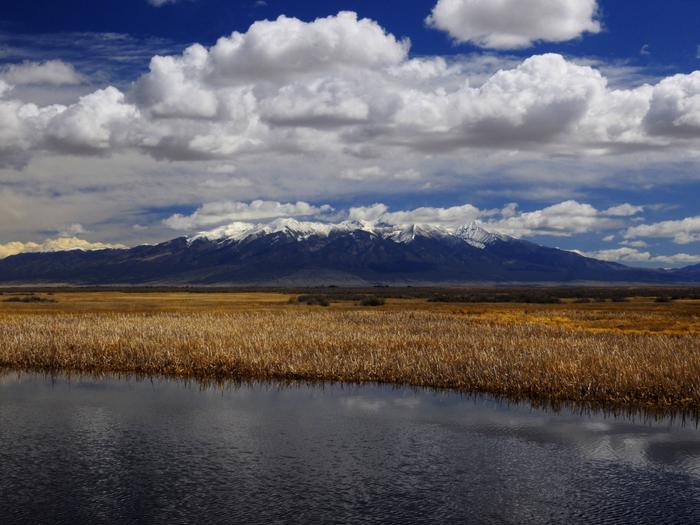Alamosa National Wildlife Refuge
Fish and Wildlife Service, Colorado.
Alamosa National Wildlife Refuge was established in 1963 to provide food, cover, and breeding habitat for migratory birds and resident wildlife. The Refuge conserves and enhances the mixtures of wetland and desert habitats found in the area to accomplish these goals. Habitat management tools used on the Refuge include water and wetland management, weed control, haying, grazing, and prescribed fire. The 12,026 acre Refuge is located at the south end of the San Luis Valley, a high mountain basin in south-central Colorado. It’s one of three national wildlife refuges in the Valley that provide crucial feeding, resting, and breeding habitat for over 200 bird species and other wildlife. The San Luis Valley, sitting at 7,800 feet, extends over 100 miles from north to south and 50 miles from east to west. Three mountain ranges surround it – the Sangre de Christo to the east, the San Juan to the west, and the Saguache to the north. At sunset, the high peaks of the Sangre de Christo take on the blood red glow which inspired the Spanish explorers to name the range “Blood of Christ.” The surrounding mountains feed the arid valley with precious surface water and replenish an underground reservoir. The mountain snow melt and artesian wells provide needed water to the agricultural community and to the rivers, creeks, and wetlands that thread across the valley floor. The Refuge lies within the Rio Grande floodplain and consists of wet meadows, old river oxbows, riparian corridors, and dry uplands. These diverse habitats support a multitude of songbirds, water birds, waterfowl, raptors, mule deer, beavers, and coyotes. The west side of the Refuge borders the Rio Grande, long considered to be the life blood of the San Luis Valley. Water from the Rio Grande maintain these important habitats. Mallards, pintails, teals, and Canada geese are common, as are American avocets, killdeers, white-faced ibises, egrets, and herons.
Nearby Activities
- Auto Touring
- Educational Programs
- Fishing
- Hiking
- Hunting
- Photography
- Visitor Center
- Wildlife Viewing
Directions
From intersection of Highway 17 and Highway 160, go east 3 miles on Hwy 160 to El Rancho Ln. Turn south (right) and head down El Rancho Ln. for approximately 3/4 of a mile until you reach the SLVNWRC HQ Office.

